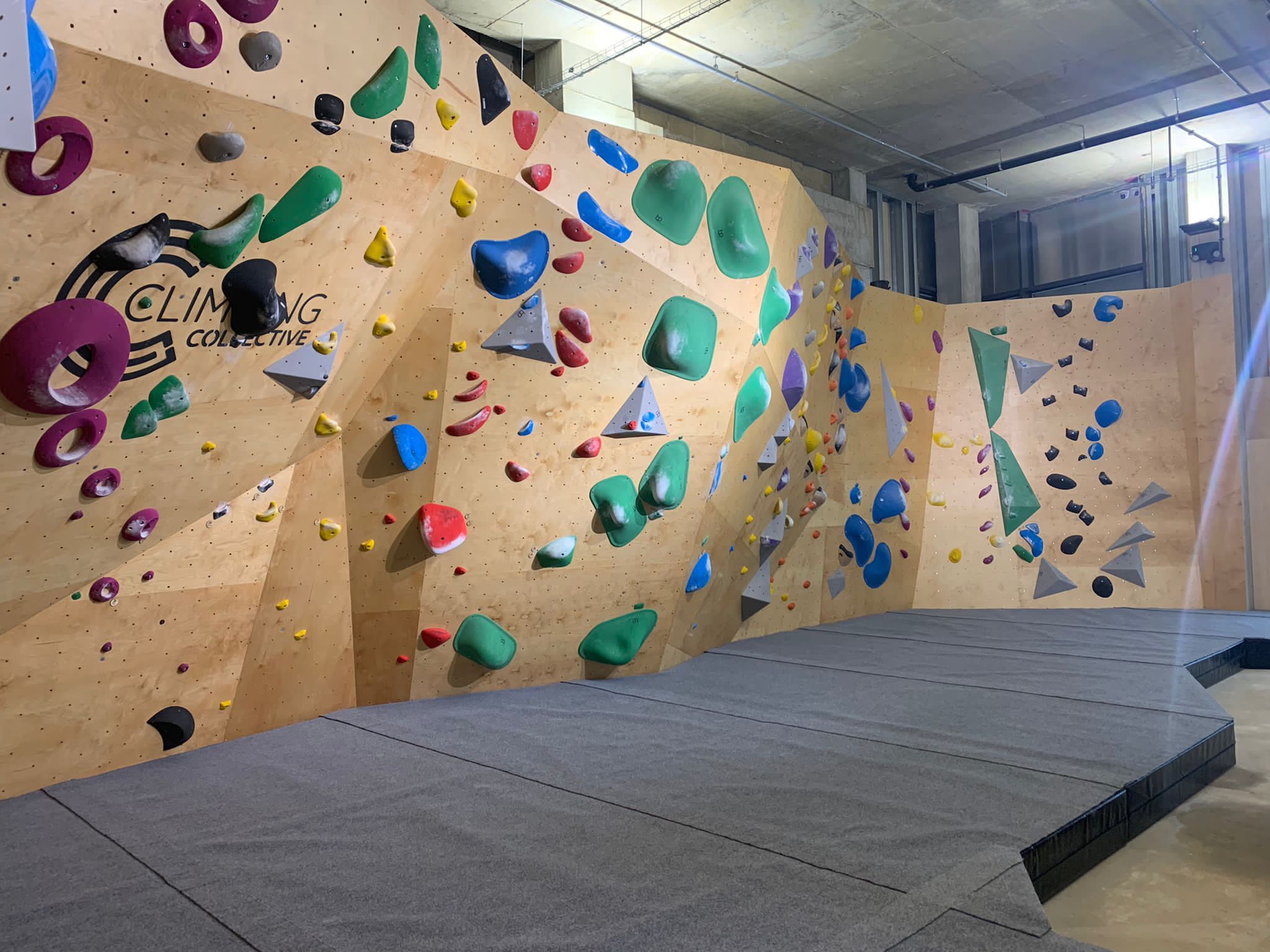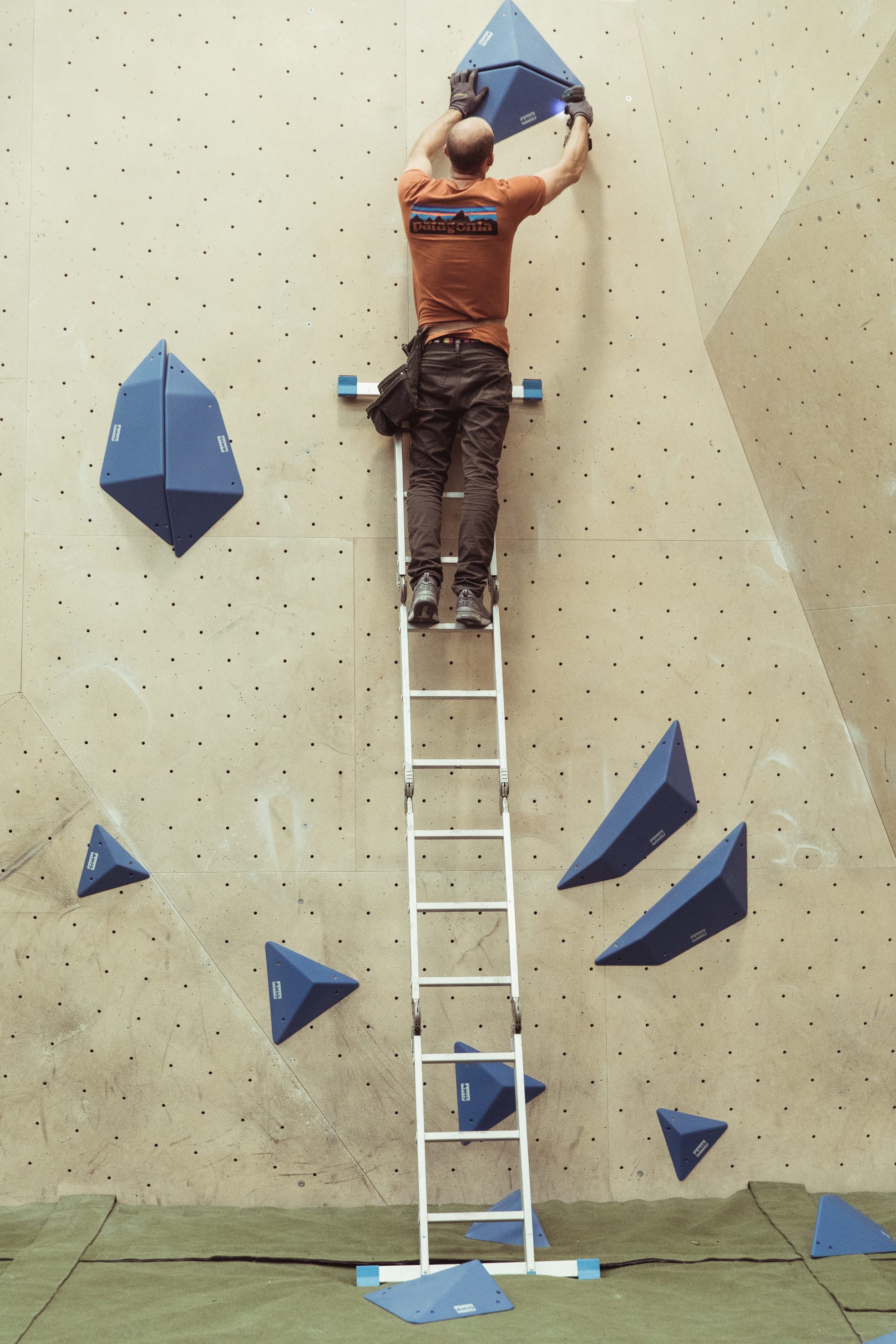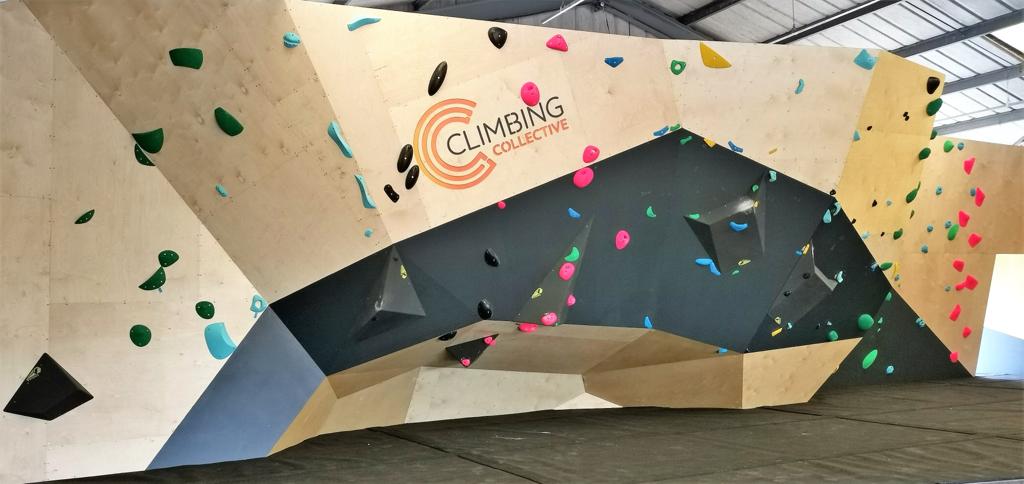When it comes to building climbing walls, we feel that route setting can play a crucial part in the construction of the climbing wall itself. Knowledge and experience in this field can significantly impact the quality, aesthetics and safety of a climbing wall. It goes without saying that route setting is both a critical and fundamental aspect of building a successful climbing or bouldering wall.
Route setting is essential for several reasons; it refers to the process of designing and creating routes and boulder problems for climbers to climb. Routes or boulders are typically colour coded and marked with tape or tags to indicate the starting position and grade. Creating a diverse and challenging climbing experience is one of the key aspects of a route setters role. It is important to balance creating challenging routes/boulders with a climbing walls need to cater to climbers of different abilities and skill levels. By creating a range of routes, from easy to difficult, climbers can progress and improve their climbing skills. The variation in difficulty and style of routes also keeps climbers engaged and motivated to return to the wall.

Another essential aspect to route setting is setting with the safety of climbers in mind. Similarly, this is primary consideration when designing and building the climbing wall. Avoiding dangerous angles which could be more susceptible to causing injury. The route setters need to consider the height, angle and features of the wall or boulder when designing the route, therefore a wall builders knowledge and experience of the route setters role can make it easier and greatly improve the options for setting. They have an eye for detail and can spot potential hazards that could cause injuries to climbers. This knowledge and expertise cannot be overstated and is invaluable when it comes to ensuring the safety of the climbers who use the walls.
Experienced route setters have a deep understanding of the technical aspects of climbing movement and climbing styles. Years of experience will bring a broader and deeper level of understanding to the table; honed through years of trial and error and exposure to a wide range of climbing styles and techniques. They understand the nuances of different types of holds and wall angles and how they can be used to create unique challenges.
In addition to technical knowledge, experienced route setters also possess a keen eye for design and aesthetics. They understand the importance of creating visually appealing routes that not only challenge climbers but also look good on the wall. They are skilled at using colour, texture, and shape to create routes that stand out and capture the attention of climbers. These skills translates seamlessly to climbing and bouldering wall design.

In summary, years of experience in route setting are critical for building successful climbing walls. Experienced route setters bring technical knowledge, creativity, and safety expertise to the table, ensuring that climbers have a challenging and rewarding experience while using the climbing wall. Ultimately, having an experienced route setter is crucial for building climbing walls that are engaging, safe, and sustainable. A skilled and knowledgeable route setter can make a significant difference in the design, construction and success of a climbing facility, attracting climbers and promoting the sport for years to come.



Recent Comments